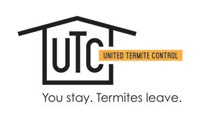Subterranean Termite Control in San Marcos, CA
Subterranean Termite Control
Subterranean termites live underground, making their way into your home or building from underneath the structure. This makes subterranean termites extremely difficult to detect in your home. However, with a thorough termite inspection, you can know right away whether you have Subterranean termites in your home.
We have several options to eradicate Subterranean termites including slab injection and traditional trench and treat methods. Termidor SC is our product of choice in these situations.
Signs of Subterranean Termites
Subterranean termites generally reside underneath or adjacent to a structure within the soil. They usually go unseen, working their way into your walls and the wood structures of your home from under the foundation. Some signs you may have a subterranean termite infestation include:
Wood damage: Finding wood damage in your home is typically a sure sign of an infestation, but it can often be difficult to see where the termites are at work. Subterranean termites will often eat at the underside of flooring, leaving the visible grain untouched. You can check for potential damage by tapping the wood every few inches, listening for a hollow sound underneath. If you hear a hollow noise, it could indicate damage from termites.
Swarms: Winged termites leave their galleries on warm, sunny days to search out mates. In southern California, swarms can occur during the fall, winter, or early spring. These winged termites are often the first sign you’ll see of a subterranean infestation. You can often find the winged termites around lighting fixtures, or maybe you’ll notice discarded wings on windowsills or floors.
Mud tubes: These brown, mud-like tubes provide cover for termites as they travel from the ground to infested wood to forage and do damage. The tubes can look somewhat like drips of mud extending along a wall or the foundation. While these tubes are often hard to spot along cracks, underneath flooring, or behind siding, they can be detected on concrete foundations and other exposed surfaces.

Trench and Treat
Due to the nature of subterranean infestations, current treatment methods for the control of subterranean termites all revolve around creating a chemical barrier at the foundation of the structure. One method for this is the “trench and treat” approach.
This process involves digging an approximately six-inch trench around the footing or perimeter of the structure, placing the termite removal product in the trench. We then refill the trench with treated soil and allow the termites to carry the treatment throughout the rest of the colony.
Slab Injection
The other primary method for subterranean termite treatment involves drilling directly through the concrete slab around the footing or perimeter of the structure, injecting the termite eradication product with an injection rod under the slab. We typically drill holes about a half inch in diameter every foot and a half along the affected area.
For both slab injection and trench and treat, we utilize Termidor SC, an extremely effective, slow-acting product that allows the termites to transfer the treatment from termite to termite throughout the entire colony.
